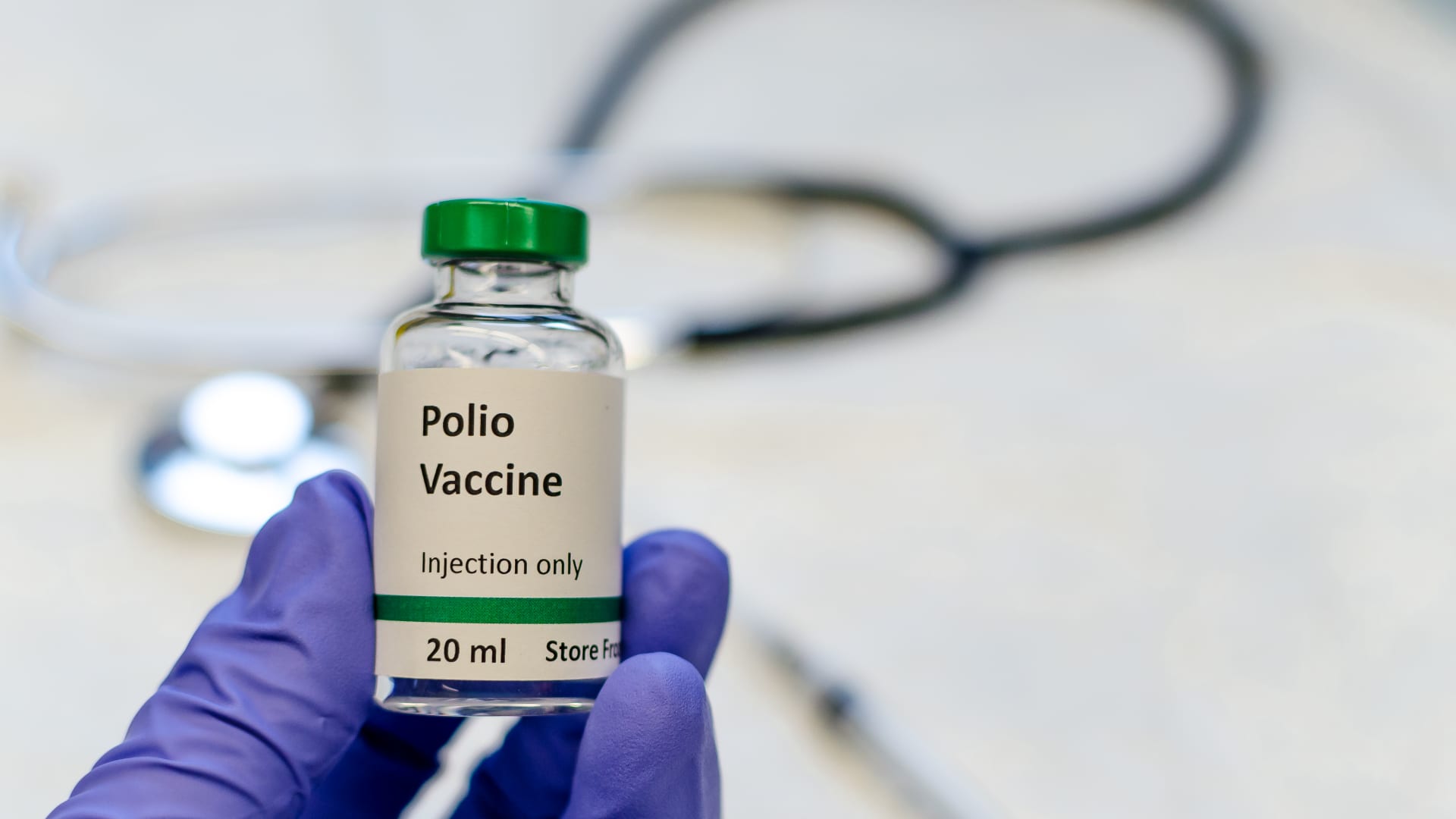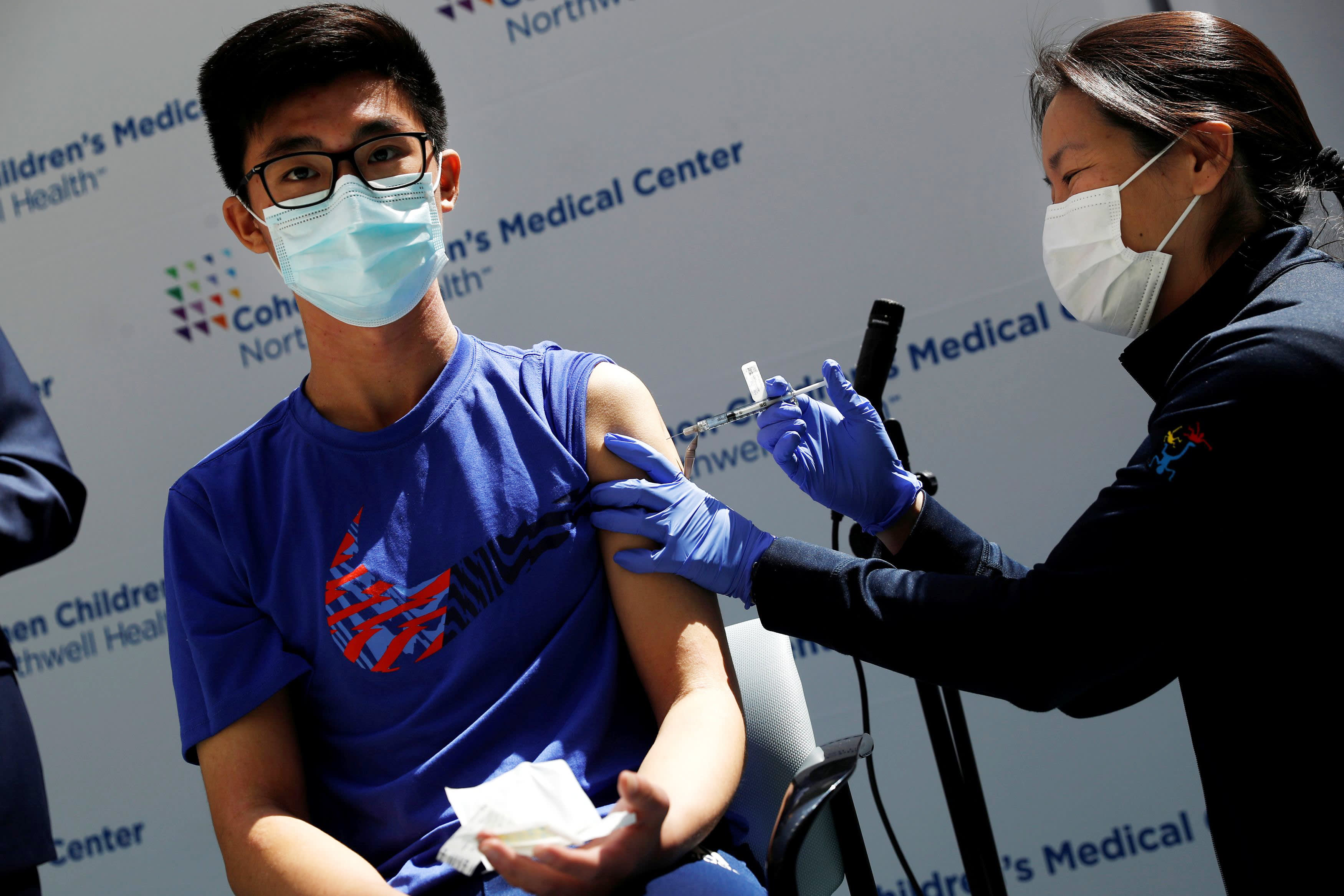Here's why Walgreens and CVS retail pharmacies are struggling — and what they're doing to fix it
Drugstores remain an important fixture of the U.S. health-care system that tens of millions of Americans rely on, but they may need to reinvent themselves.


The abundance of Walgreens and CVS Health stores makes them convenient for whenever Shriya Raghavan, a research associate based in Philadelphia, needs to pick up necessities like gum, deodorant and soap.
But she said she often has to wait for employees to unlock cabinets or stand in lengthy lines to pick up prescriptions as pharmacists juggle tasks.
Those are just some of the ways Walgreens and CVS are falling out of favor with consumers, in a trend that has hit their profits and stock prices and forced them to reconsider their strategies. They are symptoms of deeper issues plaguing retail pharmacy chains, which pivoted from years of store expansions to shuttering hundreds of locations across the U.S. to shore up profits.
Shares of both CVS and Walgreens have tumbled in the last 10 years, but CVS has fared better among the two.
Among the biggest problems for the chains, reimbursement rates for prescription drugs have fallen. Inflation, softer consumer spending, theft, and competition from Amazon and grocery stores are also making it difficult for drugstores to turn a profit at the front of the store, where they sell everything from pantry staples to makeup and cleaning supplies.
There's also widespread burnout among pharmacy staff, many of whom complain about understaffing and increasing workloads.
Many of those issues aren't new. While CVS and Walgreens got a temporary boost from Covid vaccinations and test sales during the peak of the pandemic, they now face a harsh reality: the retail pharmacy model may be broken.
"As things have started to normalize, we're reverting back to the challenges that the retail pharmacy industry had faced even before Covid," Jefferies analyst Brian Tanquilut told CNBC. "I think most of these pharmacies are realizing that fundamentally, their businesses have not really changed."
The exterior of a CVS pharmacy store is seen on August 07, 2024 in Austin, Texas.
Brandon Bell | Getty Images
Falling retail pharmacy profit margins only add to the woes at both Walgreens and CVS.
While Walgreens struggles with its push into primary care, CVS' bottom line is getting battered by higher medical costs in its insurance business. CVS earlier this month slashed its full-year profit outlook for the third consecutive quarter and announced $2 billion in new cost cuts over several years as those higher medical costs squeeze the insurance industry.
It's not just those two chains: Rite Aid, once a viable competitor, declared bankruptcy last year and is closing hundreds of store locations as it restructures.
Wall Street hasn't been happy. Shares of Walgreens are down nearly 60% this year and 80% over the last decade. CVS' stock is down almost 30% both for this year and the last 10 years. Meanwhile, Rite Aid's common stock was delisted from the New York Stock Exchange in October.
Still, retail pharmacy chains remain an important fixture of the U.S. health-care system that tens of millions of Americans rely on. They may just need to reinvent themselves.
"The retail pharmacy industry is going through a period of soul-searching, trying to understand the best model to reach the consumer," said GlobalData retail managing director Neil Saunders. "Consumer habits have changed, some of the economics of running drugstores and pharmacies have changed and the retailers in the sector are really having to reappraise how they do business to maintain profitability and maintain a viable business model."
Here are the main factors challenging the pharmacy business, and what CVS and Walgreens are doing to adapt.
Falling pharmacy reimbursement rates
Much of the pain for retail pharmacies comes from lower prescription drug reimbursement rates.
Pharmacies typically buy their medications from a distributor and then get reimbursed by pharmacy benefit managers, or PBMs. The powerful drug supply middlemen also negotiate discounts with manufacturers on behalf of insurers and create lists of medications covered by health plans.
The three largest PBMs – CVS Health's Caremark, UnitedHealth Group's Optum Rx and Cigna's Express Scripts – handle almost 80% of all prescriptions in the U.S.
Pharmacies have accused PBMs of setting lower reimbursement rates, which, in some cases, can mean pharmacies get paid less than the cost of buying and dispensing a prescription. Those middlemen are also accused of offering "take it or leave it" contracts when negotiating reimbursements with pharmacies, effectively forcing them to accept lower rates so they can maintain access to patients covered by PBMs.
"There's no leverage. There's no negotiating power on the side of the retail pharmacies," Tanquilut told CNBC. "So we've seen a consistent pressure on margins on the pharmacy side over the last several years to the point where that's a huge challenge."
The operating margin for Walgreens' U.S. retail pharmacy unit was -5% last year, down from 3.9% in 2019 and 4.4% in 2015. Meanwhile, CVS' operating margin for its pharmacy and consumer wellness business was 4.6% last year, up from 3.3% in 2022 but down from 8.5% in 2019 and 9.9% in 2015.
CVS has a slight competitive advantage over Walgreens since it has its own PBM, and the margin pressure from Caremark is likely "not as severe" as it is for other PBMs, Tanquilut said.
CVS in December also introduced a new pharmacy reimbursement model called CostVantage, which will launch at the beginning of next year and use what the company calls a "transparent" formula to determine a medication's price. A CVS spokesperson said it will provide more clarity and predictability for consumers.
But some analysts told CNBC that it's still unclear how effective that new model will be.
Meanwhile, Saunders said more consumers are using online pharmacy services such as PillPack, a subsidiary of Amazon Pharmacy, to get their prescription medications. He noted that online pharmacy fulfillment remains "fairly small in the scheme of things," but said it is "definitely growing and putting a little bit of pressure on some of the traditional pharmacy chains."
Front-of-store woes
A Walgreens truck parks near a CVS Pharmacy on March 10, 2023 in New York City.
Leonardo Munoz | Corbis News | Getty Images
E-commerce rivals, discounters and big-box retailers are an even bigger threat to the retail side of Walgreens' and CVS' pharmacy businesses.
As competition mounts, the chains' online retail presence has also lagged behind those of Amazon and other retailers like Walmart and Target, according to Leerink Partners analyst Michael Cherny.
"It wasn't as likely that an individual pre-Covid, or even the early days of Covid, would think first and foremost of going to CVS.com or Walgreens.com for shopping," Cherny said. "[CVS and Walgreens] were behind on e-commerce."
Inflation is also squeezing consumers, who have become more prudent with their purchases. A budget-conscious shopper is more likely to shop at retailers including Walmart, a dollar store or Costco, despite the convenience the retail pharmacies offer, Cherny noted.
Brittainy Lynn, a 38-year-old freelancer based in Austin, Texas, said it "seems like prices are really high" at Walgreens and CVS compared with other stores.
"It is not my first choice," Lynn told CNBC. "Walmart or Target is generally where I find things I need for the cheapest price. I do frequent Dollar Tree as well, but not really for essentials."
Walgreens and CVS have blamed weaker retail sales in part on consumers watching their spending.
Earlier this month, CVS said same-store sales at the front of the store were down roughly 4% during the second quarter from the same period a year ago, which reflects a "general softening of consumer demand."
Walgreens in June said same-store retail sales decreased 2.3% during the fiscal third quarter compared with the year-earlier period. The company said its U.S. retail pharmacy business faced "significant challenges" in a "worse-than-expected consumer environment."
Walgreens and CVS have both increased their focus on their private-label products to lure in shoppers who have traded down from national brands to beat inflation.
In a statement, a Walgreens spokesperson said the company is seeing "strong success among our own brand products," with brand penetration "growing quite nicely." They added that the company is expanding its variety of products, adding 37 new items alone in the second quarter. That "perfectly complements consumer focus on value," the spokesperson said.
Walgreens more exposed to retail pharmacy pressure
While the major chains face many of the same hurdles, Walgreens is likely more exposed to the pressures on its retail pharmacy business than CVS is, Evercore ISI analyst Elizabeth Anderson told CNBC.
CVS operates a PBM and the nation's third-largest health insurer, Aetna, which could help offset issues on the retail pharmacy side.
Walgreens and VillageMD
Source: Walgreens
CVS' retail pharmacy unit was the second-biggest contributor to sales last year, raking in $116.76 billion. The company's health services segment, which operates Caremark and primary-care provider Oak Street Health, booked nearly $187 billion in sales.
Meanwhile, Walgreens gets the vast majority of its revenue from its U.S. retail pharmacies. That business unit took in more than $109 billion last year, dwarfing the $21.83 billion from its international segment and nearly $1.8 billion from its health-care unit.
Walgreens' international segment operates more than 3,000 retail stores abroad, including locations of U.K.-based health and beauty retailer Boots. The company's health-care unit offers primary care, urgent care and post-acute care services, as well as a specialty pharmacy, among other services.
Even as Walgreens tries to diversify its business, the company has been "playing catch-up" with CVS in the health-care space, according to Jeffries' Tanquilut.
Retail giants and pharmacies have been pushing to deliver medical care directly to patients, which could help them capture a larger slice of the more than $4 trillion U.S. health-care industry.
But several companies, including Amazon, Walmart, CVS and Walgreens, are feeling the pain from bets on primary care. That's because building clinics requires a lot of capital, and the locations typically lose money for several years before becoming profitable, according to Tanquilut.
Unlike CVS, Walgreens could potentially exit that market altogether. The company said in a securities filing last week it is considering a sale of its primary-care provider VillageMD.
Walgreens invested $1 billion in VillageMD in 2020, then another $5.2 billion a year later to become its majority owner. But Walgreens started closing clinic locations last year. In March, the company recorded a hefty nearly $6 billion charge related to the decline in value of its investment in VillageMD.
What's the future of the retail pharmacy?
Retail pharmacies likely won't disappear soon, especially as the American population ages and more people need to pick up prescriptions, Evercore's Anderson said.
But she said they may not need to "exist in their current form." That could potentially mean increasing their online presence, no longer selling certain products like greeting cards and shrinking store footprints.
"I think there'll be some experimentation with models there. It's more of a question of what the new retail pharmacy model will look like," Anderson told CNBC.
Walgreens has opened roughly 100 smaller-format stores, which have fewer front-of-store items and over-the-counter medicines and feature the company's branded products, a spokesperson said in a statement. Walgreens plans to add more "mini drugstores" this year.
Walgreens "mini-drugstores" being tested across the U.S.
Courtesy: Walgreens
The company is also piloting a Chicago store location that focuses on "convenience and speed through digital pickup, pharmacy and grab-and-go solutions," Walgreens said on its website. Most prescription or retail orders can be placed and filled at a counter, which could deter theft.
Another location in Aubrey, Texas, moves the pharmacy to the front of the store in a departure from the traditional model.
The company's website said it does not plan to roll out additional pilot stores until "learnings about what works and what doesn't are better understood."
More CNBC health coverage
Meanwhile, a CVS spokesperson said the company is "innovating to meet our customers' and patients' varying needs." The spokesperson pointed to the company's private-label brands, assortment of national brands, and loyalty program that offers discounts and benefits for patients.
The company has also opened Oak Street Health primary-care centers side by side with CVS pharmacies in Texas and Illinois, with plans to introduce around two dozen more by the end of the year.
Shuttering stores to shore up profits
In the meantime, CVS and Walgreens are cutting costs.
Walgreens in June announced plans to shutter a "significant" number of its 8,600 U.S. stores. The company's CEO, Tim Wentworth, said only 75% of the chain's locations were profitable, and that a significant portion of the other quarter could shutter by 2027.
In a statement, a Walgreens spokesperson said, "We have recently exhibited the ability to, and will continue to make difficult decisions that benefit our business, as we identify opportunities that unlock value, validate existing pathways and lead [Walgreens] into a successful future."
In 2021, CVS announced it was shuttering 900 stores, or nearly 10% of its U.S. retail locations, over a three-year period. CVS executives earlier this month said the company is on track to meet that goal by the end of the year, with 851 stores closed to date.
In a statement, a CVS spokesperson said the store closure decisions are based on population shifts, consumer spending patterns and a given community's store density, among other factors. Even after the closures, 85% of people in the U.S. will still live within 10 miles of a CVS pharmacy, the spokesperson noted.
Amar Singh, senior director at retail consulting company Kantar Group, said shuttering underperforming locations could help Walgreens and CVS right-size their business and figure out "the right equation" for their stores that will win back shoppers and shore up profits.
But store closures could make it harder for many Americans to get prescriptions, as pharmacy deserts become more common in underserved communities across the U.S.
They also may do little to fix some of the deeper issues plaguing retail pharmacies, according to Saunders. For example, he said addressing declining pharmacy reimbursement rates may require legislation and lobbying, and "getting that done is almost possible."
"In some ways, closing stores is a reaction to the problem. It's not the solution to the problem," Saunders said. "But longer term, if other things don't change, they'll probably find themselves in the same position in 10 years time where they have to close more stores."

 Aliver
Aliver 

































